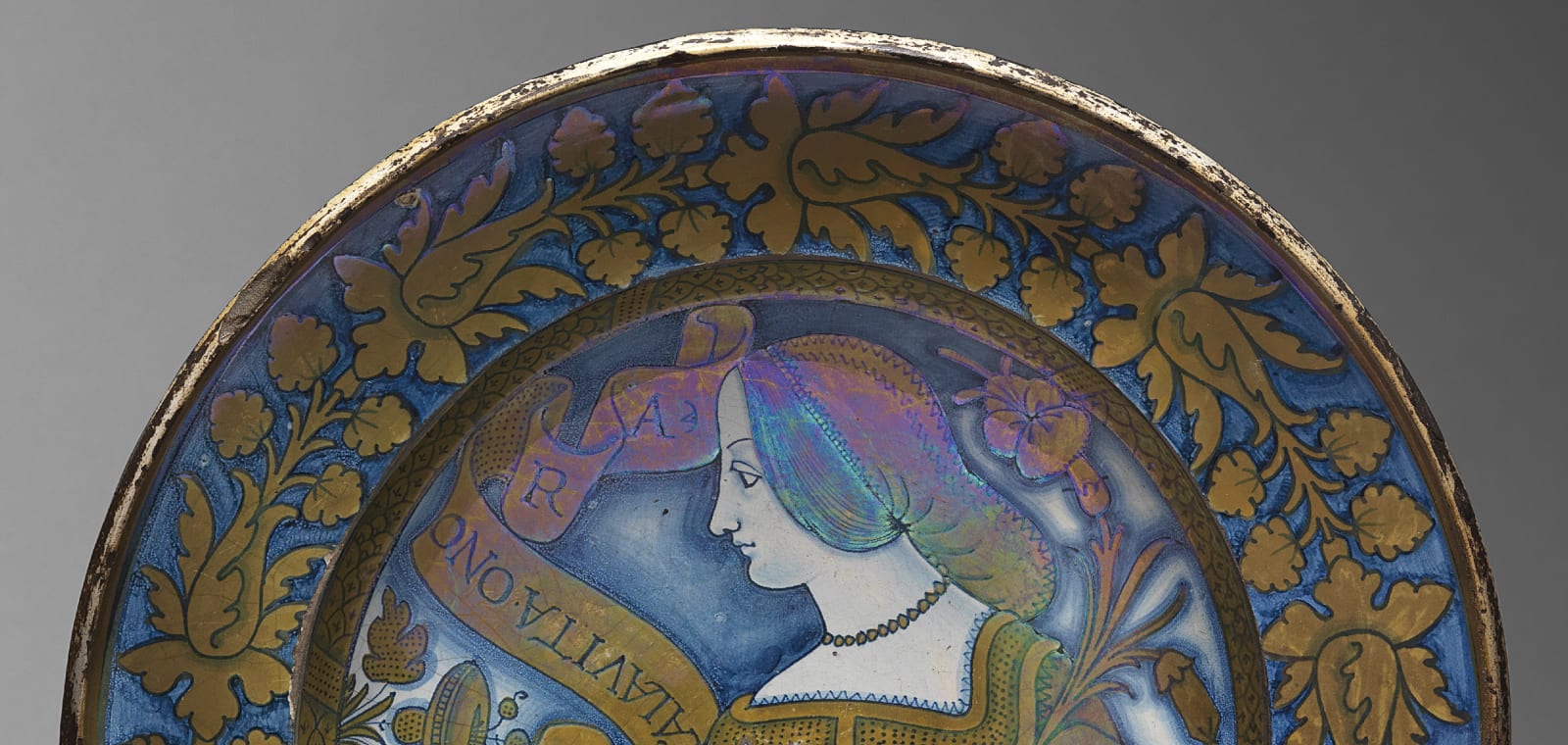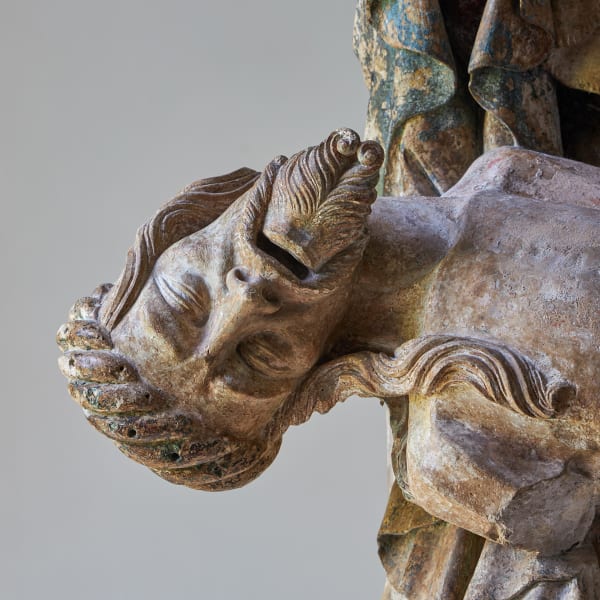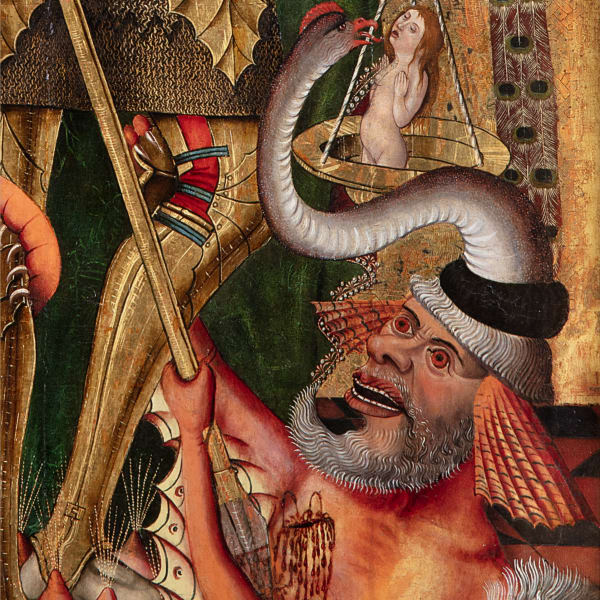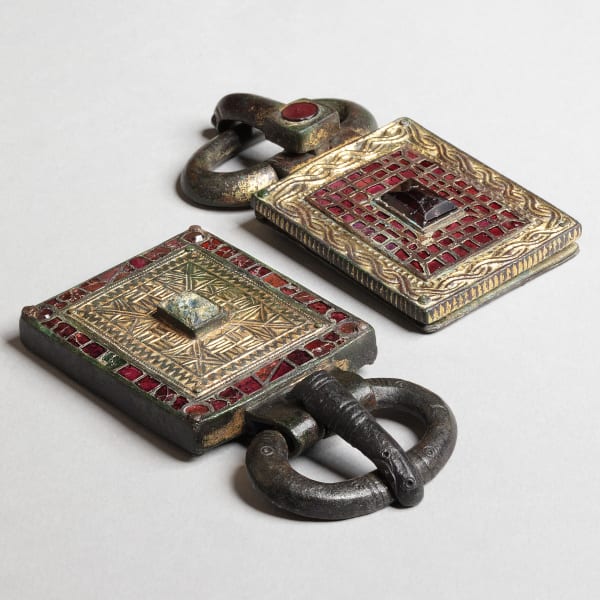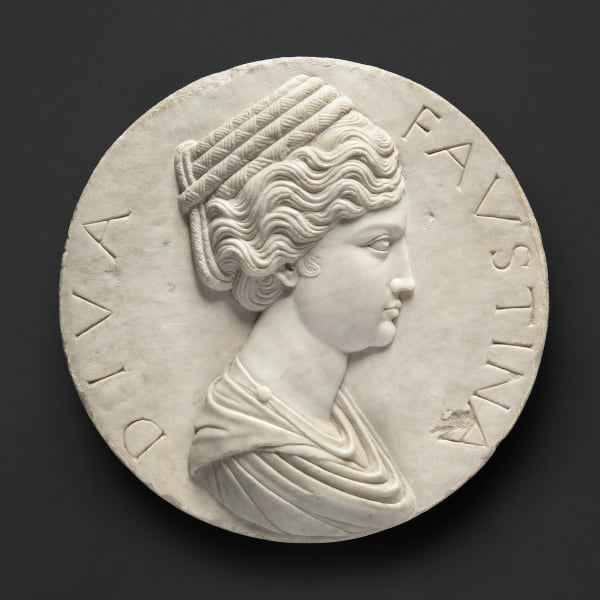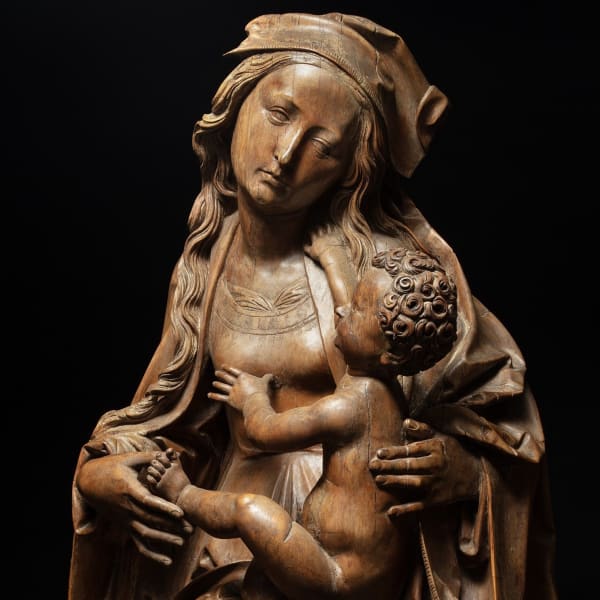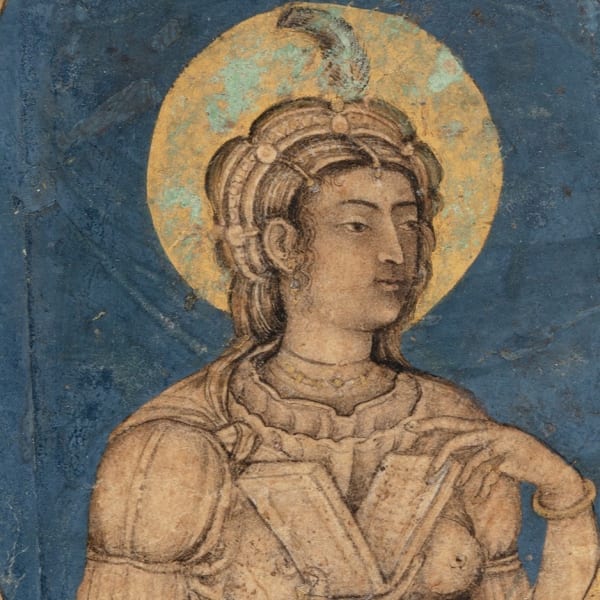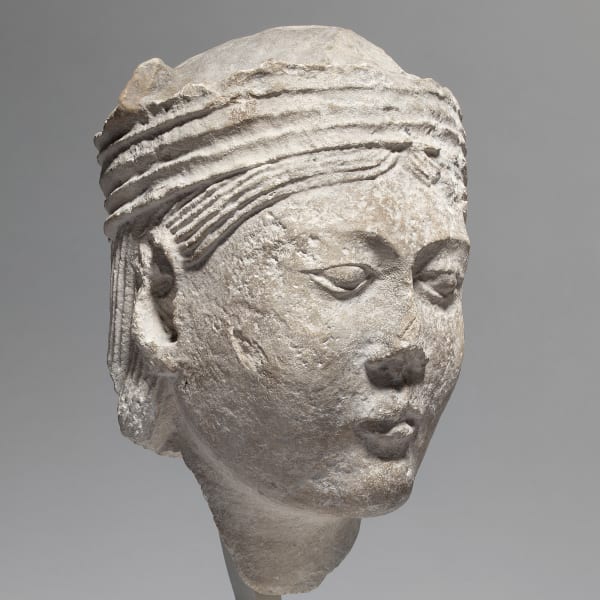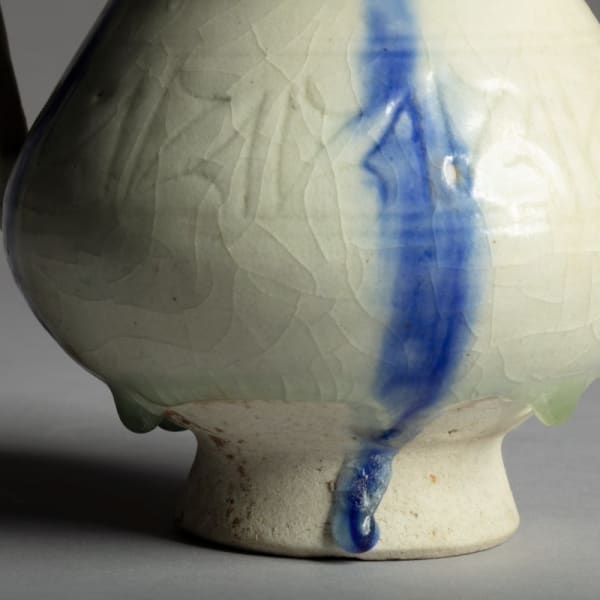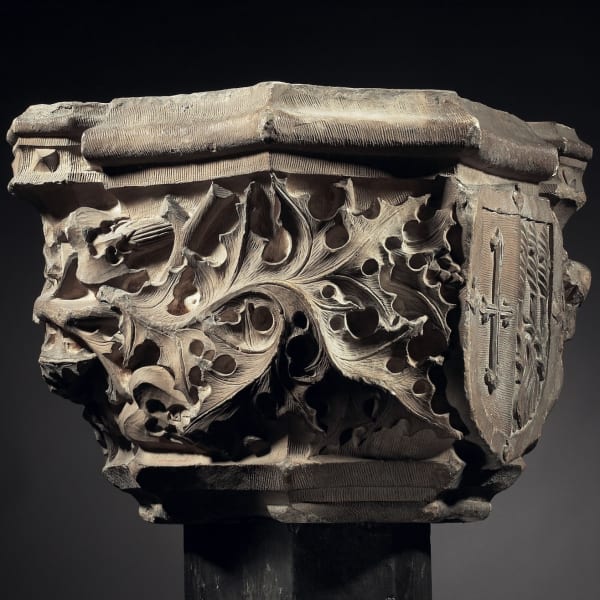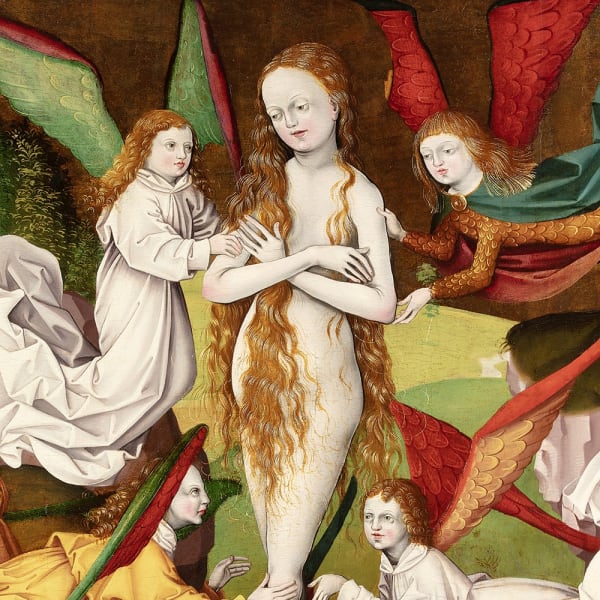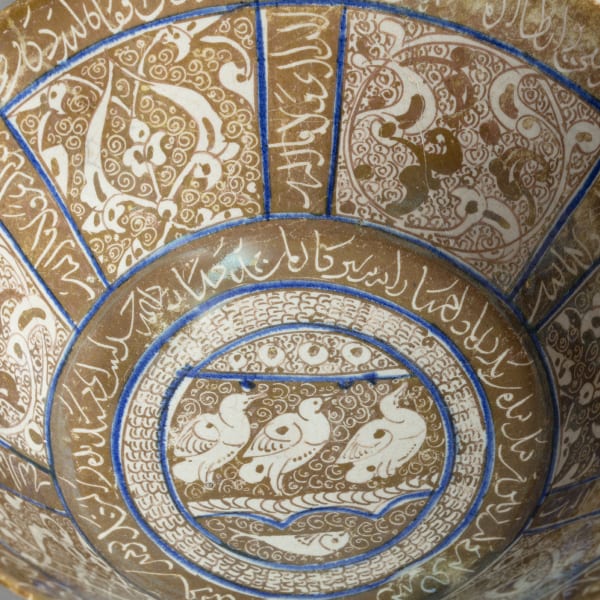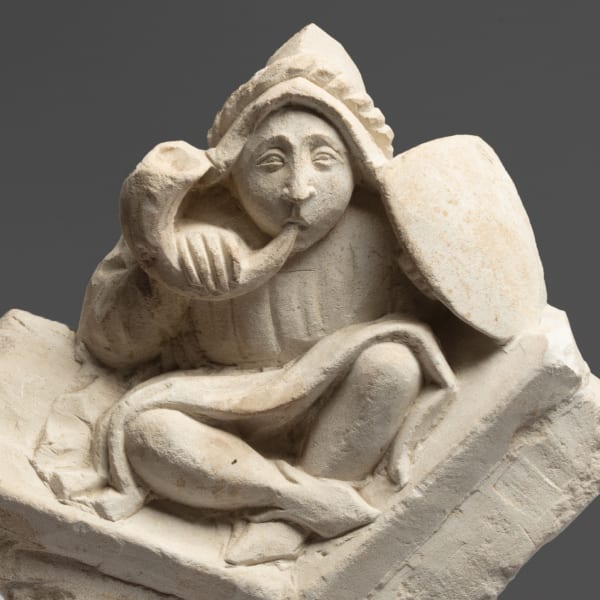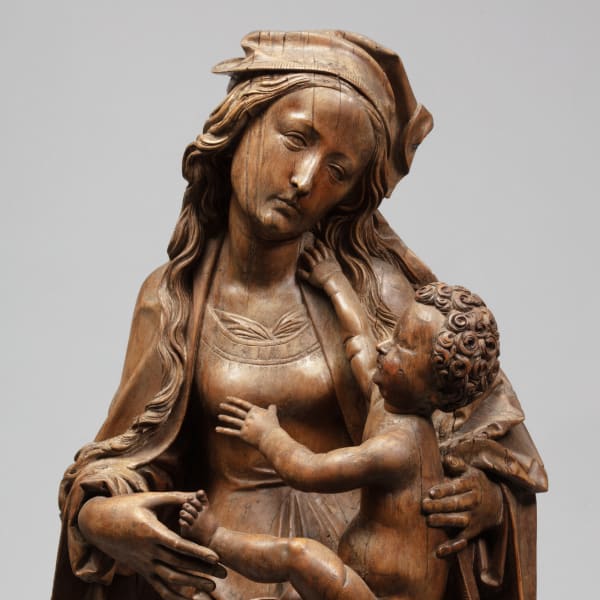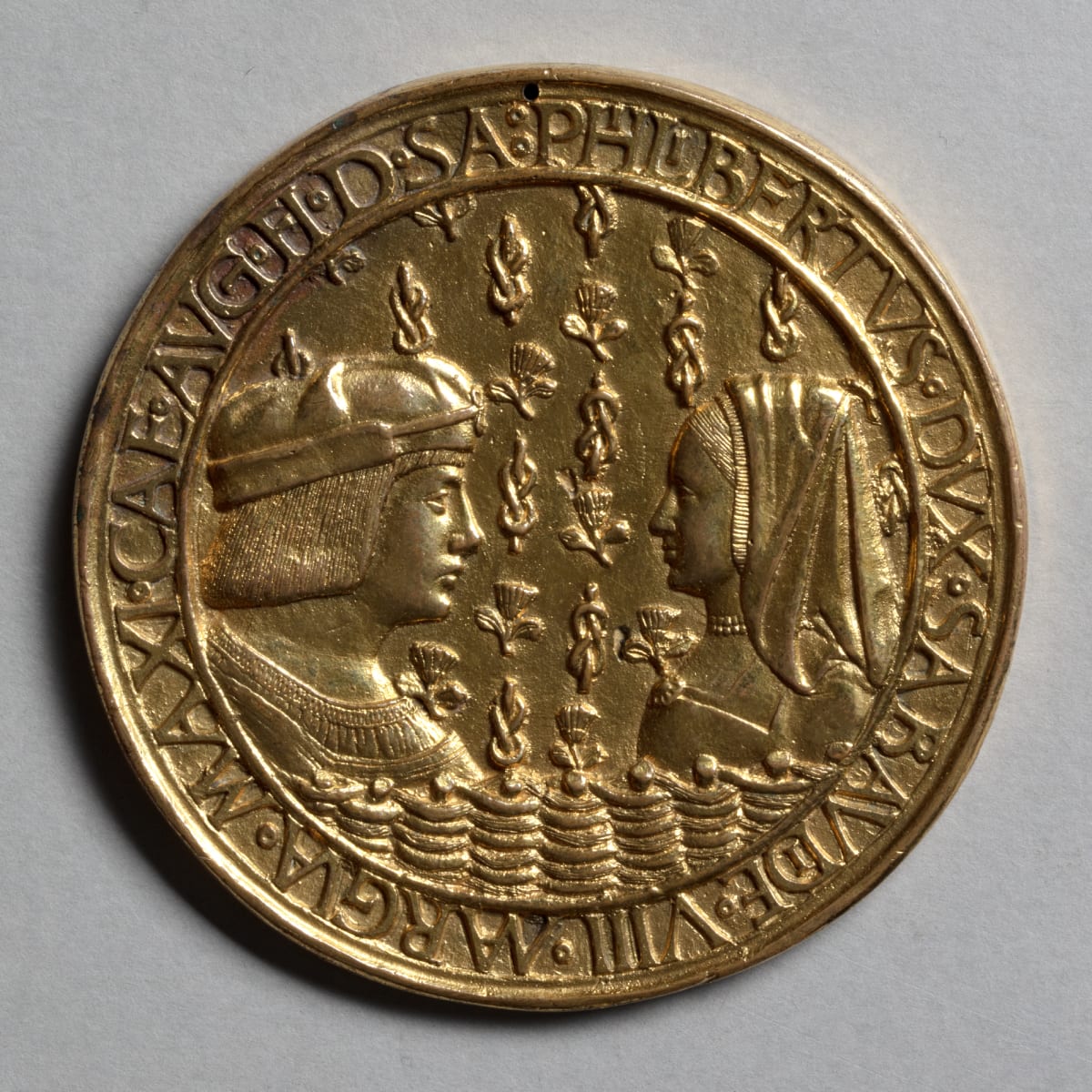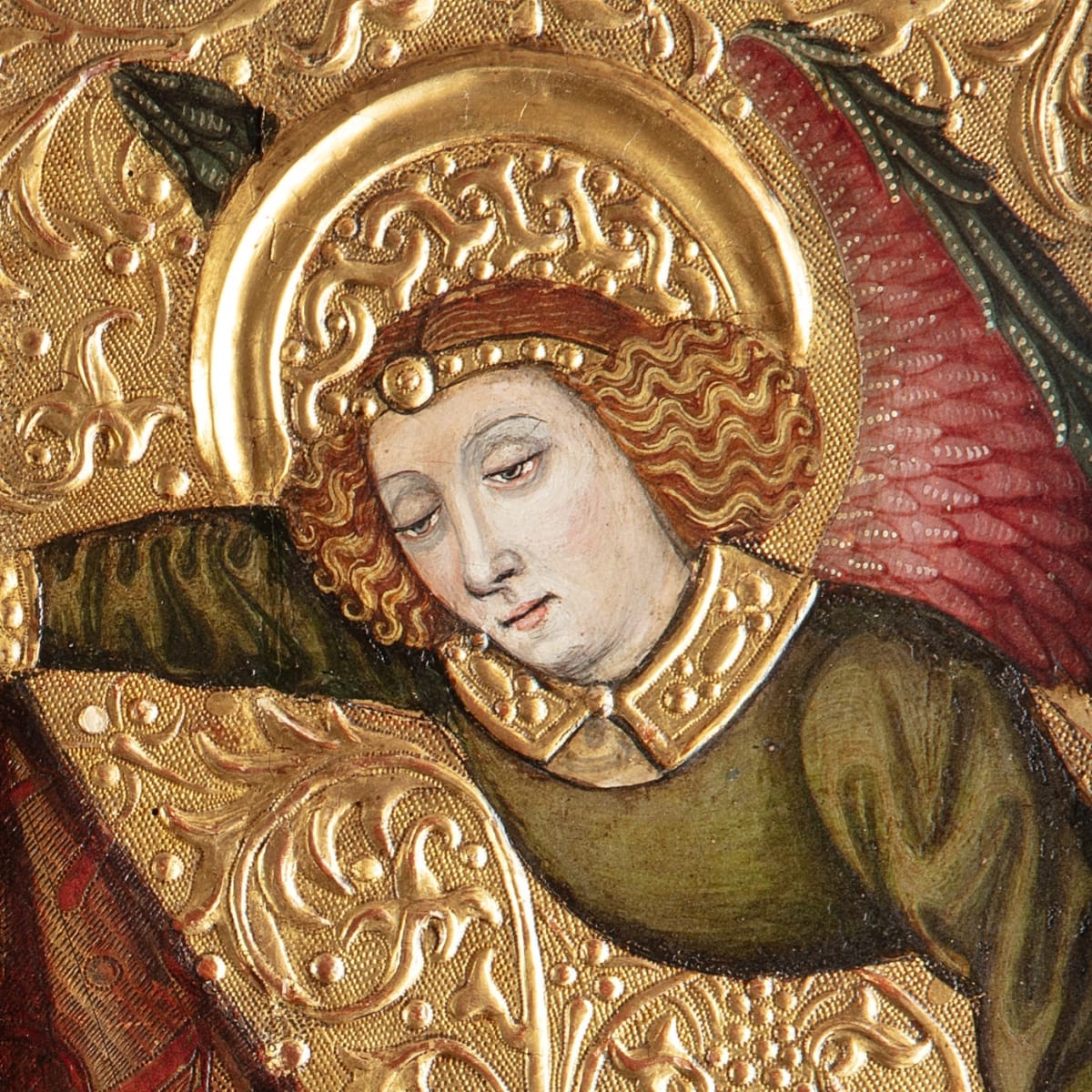
Lustreware: from Abbasid Iraq to Renaissance Italy examines the transformative effect that glazing ceramics with metallic 'lustre' oxides had on pottery production in the medieval period, tracing the dissemination of the lustre technique across the Islamic world and into Europe. A survey of forty ceramics, from Iraq, Egypt, Syria, Iran, Spain and Italy, this exhibition will mark the first time the gallery presents medieval Islamic ceramics alongside Hispano-Moresque chargers and Italian Renaissance maiolica.
Lustreware ceramics have long been admired for the alchemical effect of their metallic glazes, which imitate the properties of precious metal. The earliest origins of lustre-painting on ceramics can be traced to the workshops of ninth-century Basra, where potters fired the gold- and ruby-lustred ceramics that decorated the palaces of the Abbasid caliphs. Though the technique for painting ceramics with lustrous metallic glazes seems to have first emerged from the practice of painting enameled glass, lustreware quickly developed into an art form of its own, and became a luxury commodity that was exported across the Islamic world and beyond. From its origins in the Abbasid caliphate, lustre-painting moved with craftsmen to the west, across the Levant and into North Africa. In the centuries to follow, the technique also made its way eastward to Iran, where the status and appeal of luxury ceramics reached unprecedented levels.
To the west, lustre technology moved with migrant craftsmen into Spain and Italy, where the art of lustre would forever transform pottery production in Europe. In Spain during the later Middle Ages, lustre glazes were used to decorate magnificent sets of 'Hispano-Moresque' tableware for the European elite, and by the fifteenth century, potters in Italian workshops were exposed to and influenced by exported Spanish lustred wares. This had a transformative effect on pottery production in Italy and led to the development of a new and vibrant tradition of figural painting on ceramics: Italian maiolica. By presenting early Islamic ceramics alongside grand Hispano-Moresque chargers and Italian maiolica, this catalogue traces the movement of the beguiling art of lustre across geographies during a period spanning some seven centuries.
Right: Two small lustred bowls, Abbasid Iraq, Basra, 9th-10th century

A lustred bowl with peacock
Abbasid Iraq, Basra
c. 925-975
A lustred bowl with STELLATE ORNAMENT
Iran, Kashan
c. 1200-1220


A lustred charger with the crown and arms of Aragon
Spain, Valencia, Manises
c. 1440
Workshop of Maestro Giorgio Andreoli (c. 1470-1553)
A gold anD ruby lustred dish WITH THE ARMS OF THE DI DATO FAMILY
Italy, Umbria, Gubbio
C. 1521

